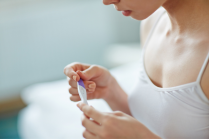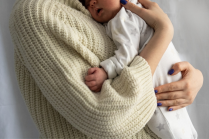3 Contraception Options After Having A Baby
What are your options when you've just had a baby?
27 December 2017
Editor

A new mum’s ability to conceive returns just weeks after birth, which means she needs to start using contraception right after delivery if she’s ready to resume sexual intercourse.
We do advise discussing your contraception options with your doctor, midwife, or nurse-practitioner. However, nearly every method could work with new mums, but with a lot more factors to consider.
And here are the contraception methods new mums can use or follow:
Barrier Methods
This refers to physically preventing the sperm from reaching the egg. These methods don’t affect hormones, interfere with lactation, or have any complications. The most popular contraception barrier methods are condoms and the withdrawal method.
Other barrier methods can be:
- Diaphragms (small, flexible rubber cup that is inserted in the vagina and fits over the cervix)
- Cervical Cap (small, bowl-shaped latex or silicone cup. It is inserted into the vagina and fits snugly over the cervix)
Hormonal Methods
These methods use synthetic hormones to thin the uterine lining so the egg can’t be implanted, and thicken cervical mucus to block the sperm. These methods are highly effective at preventing pregnancy.
Some of these methods use estrogen which increases your risk for blood clots during the early postpartum weeks. Thus, a new mum must wait for at least four weeks after birth before using them.
Estrogen may also reduce the quantity and quality of breast milk, so these methods are not advised for nursing mums, unless their breast milk is well-established.
These methods include:
- The mini-pill: which contains a small amount of progestin, and is a good alternative for nursing mums.
- The pill: contains estrogen and progesterone.
- The ring: a flexible, transparent ring that’s inserted into the vagina at the beginning of the menstrual cycle. The ring releases estrogen and progestin. And a new one must be inserted every 28 days.
- The patch: a thin, beige square that you apply to your skin like an adhesive bandage, which releases, which continuous low dose of estrogen and progestin.
- The shot: flexible rod about the size of a matchstick that's inserted under the skin of your upper arm where it continually releases small amounts of progestin. This contraception can stay in place for up to three years.
Intrauterine Devices
An Intrauterine device or IUD is a t-shaped device that’s inserted into the uterus and is made of flexible plastic. This device provides safe, highly effective long-term contraception. And is safe for nursing mums.
- Tags:
- Conceive
- contraception
- birth












































